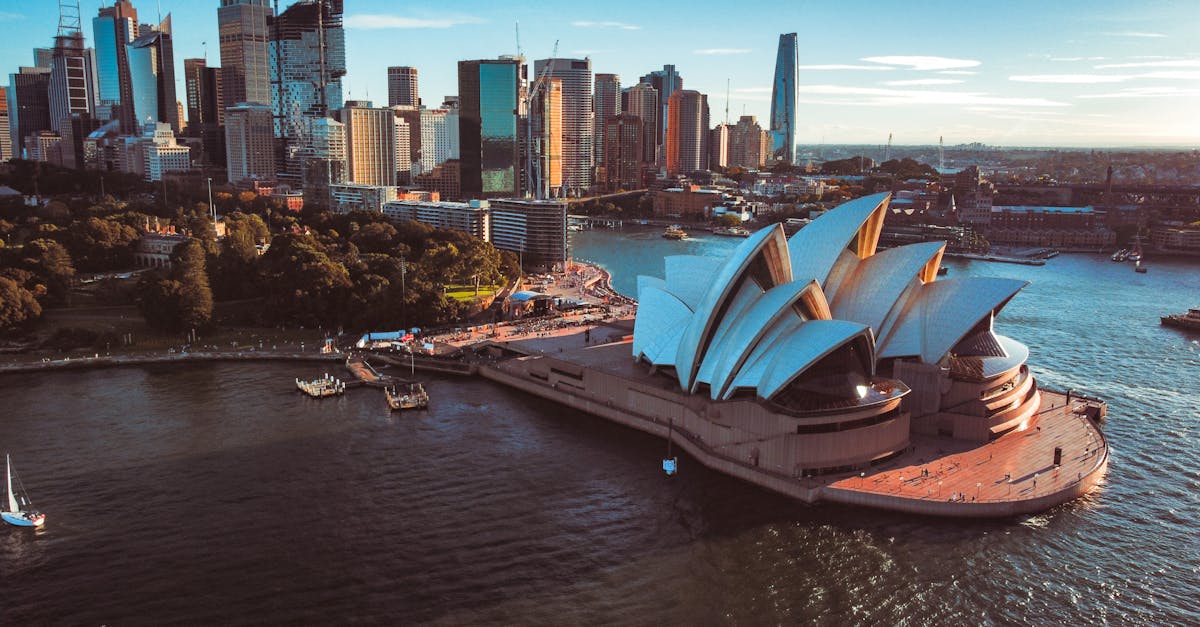ADEETIE: Energy Efficiency
- ADEETIE Scheme Launched: Union Ministry of Power and Bureau of Energy Efficiency (BEE) launched the Assistance in Deploying Energy Efficient Technologies in Industries & Establishments (ADEETIE) scheme.
- Why: To accelerate the adoption of advanced energy-efficient technologies in India’s MSME sector and support the transition to a low-carbon economy.
- Financial Support: Offers interest subvention of 5% for Micro & Small Enterprises and 3% for Medium Enterprises on loans for energy-efficient technologies.
- Why: To make energy efficiency projects accessible and affordable for MSMEs.
- Comprehensive Handholding: Provides end-to-end support including Investment Grade Energy Audits (IGEA), Detailed Project Reports (DPRs), and post-implementation Monitoring and Verification (M&V).
- Why: To facilitate the entire process from planning to implementation for MSMEs.
- Budgetary Outlay: ₹1000 crore allocated, with ₹875 crore for interest subvention, ₹50 crore for energy audits, and ₹75 crore for implementation support.
- Why: To mobilize an estimated ₹9000 crore in investments, including ₹6750 crore in MSME lending.
- Target Sectors and Implementation: Covers 14 energy-intensive sectors and aims for widespread adoption across identified industrial clusters over three years (FY 2025-26 to FY 2027-28).
- Why: To ensure broad impact across key industrial segments and allow for progressive deployment.
- ADEETIE Portal: Launched to streamline the financing process for beneficiaries.
- Why: To facilitate easy access to scheme benefits and information.
- Expected Benefits: Aims to help MSMEs reduce energy consumption by 30–50%, improve competitiveness, and contribute to India’s climate commitments.
- Why: To enhance industrial productivity, reduce environmental impact, and support sustainable growth.
Deepfakes
- Denmark Proposes Landmark Deepfake Ban: Denmark is introducing a copyright amendment to prohibit sharing deepfakes without consent, protecting individuals’ likenesses, voices, and faces.
- Why in News: This aims to give individuals control over their digital identity and protect them from AI-driven manipulation.
- Deepfakes Defined: Synthetic media (video, audio, images) created with AI to depict people saying or doing things they didn’t, blurring reality and manipulation.
- Technology: Utilizes deep learning, Generative Adversarial Networks (GANs), and Natural Language Processing (NLP).
- Danish Bill’s Key Provisions:
- Imitation Protection: Bans public sharing of realistic digital recreations of a person’s features.
- Post-Mortem Protection: Extends protection of likeness for up to 50 years after death.
- Consent-Based: Requires consent for sharing deepfakes, with the onus on the sharer to prove it.
- Platform Responsibility: Holds platforms accountable for removing deepfakes or facing penalties.
- Harm-Agnostic: Focuses on the act of publishing deepfakes, not specific harms.
- India’s Approach:
- No dedicated deepfake law, relies on IT Act (impersonation, obscenity), IT Rules (platform removal of morphed content), and Copyright Act (unauthorised use of copyrighted material).
- Judicial interventions (Anil Kapoor, Rajnikanth cases) have protected celebrity likenesses based on personality rights.
- Comparison: India vs. Denmark:
- Denmark’s proposal is significant for extending protections to ordinary citizens, unlike India’s current focus on celebrities.
- Denmark’s law is a direct ban on publication, while India’s existing laws address specific harms.
- Challenges: Enforcement across borders and potential challenges in differentiating satire/parody remain concerns for the Danish proposal.
Enigma
- The Sevilla Commitment: Outlines steps to boost sustainable development finance, address the global debt crisis, and reform the international financial architecture.
- Why in News: Adopted at the Fourth International Conference on Financing for Development (FfD4) in Sevilla, Spain, amidst rising debt and economic instability.
- Objective: To close the $4 trillion annual SDG financing gap in developing countries by aligning financial flows with development goals and ensuring debt sustainability.
- Key Components:
- Catalyzing Investment: Promotes public-private partnerships and blended finance.
- Addressing Debt Crisis: Proposes debt swaps, pause clauses, and debt-for-development swaps.
- Reforming Global Financial Architecture: Calls for a more equitable and inclusive international financial system.
- Key Initiatives: Includes Debt Swaps for Development Hub, Debt-for-Development Swap Programme, Debt “Pause Clause” Alliance, and coalitions for global solidarity levies.
- Challenges for Developing Countries:
- Debt Burden: 3.3 billion people in countries spending more on debt servicing than health or education.
- Overlapping Fiscal Demands: Countries must service debt while investing in climate resilience, infrastructure, and public services.
- Debt as Development & Climate Justice Issue: High interest rates and limited access to finance force difficult choices between debt repayment and critical investments, disproportionately affecting vulnerable nations.
- Measures for Equitable Financing System:
- Shift from loans to grants for developing and climate-vulnerable countries.
- Reform credit rating systems to include climate resilience.
- Implement gender-responsive budgeting and invest in care infrastructure.
- Create a UN-led sovereign debt resolution mechanism.
NATO
-
Secondary Sanctions Warning: NATO Secretary General Mark Rutte warned Brazil, China, and India about potential severe secondary sanctions if they continue business with Russia. This highlights NATO’s involvement in enforcing international pressure on Russia and its global reach in imposing economic consequences.
-
Collective Defence (Article 5): NATO’s core principle is collective defence, meaning an attack on one member is an attack on all. This remains its primary mission, as demonstrated by its continued focus on deterring aggression.
-
Expansion to 32 Members: Sweden’s recent accession brings NATO’s membership to 32 countries. This expansion signifies the alliance’s growing relevance and appeal in the current geopolitical climate, particularly in response to perceived threats.
-
Post-Cold War Evolution: While established for Cold War defence against the Soviet Union, NATO has adapted to address a broader spectrum of security challenges, indicating its dynamic nature and ability to respond to evolving threats beyond its original mandate.
GM Crops
-
GM Maize Field Trials Approved: Two types of GM maize are set for field trials this summer season at Punjab Agricultural University.
- Why it’s news: This signifies progress in GM crop research in India, following regulatory approval.
-
Trials are for Research Only: Punjab Agricultural University Vice-Chancellor stated the trials are solely for research and will not determine commercial cultivation.
- Why it’s news: This clarifies the immediate scope of the trials, managing expectations about market release.
-
Opposition to Trials: The Coalition for a GM-Free India has asked the Punjab government to retract its no-objection certificate for the trials.
- Why it’s news: Highlights the ongoing debate and opposition to GM crops in India, showcasing public concern.
-
GM Crops Explained: GM crops have altered DNA through genetic engineering to introduce or modify traits.
- Why it’s news: Provides essential background context on what GM crops are for readers.
-
Regulation in India: The Genetic Engineering Appraisal Committee (GEAC) under the Ministry of Environment, Forest and Climate Change approves GM organisms.
- Why it’s news: Informs about the regulatory framework governing GM crops in the country.
-
Bt Cotton Success: Bt Cotton is the only GM crop currently approved for commercial cultivation in India, leading to increased cotton production.
- Why it’s news: Offers a successful precedent for GM crop adoption in India, influencing the discussion around other GM crops.
Aadhaar Authority
-
UIDAI urges children’s biometric updates: Parents of children aged 5-7 are advised to update their biometric details for Aadhaar.
- Why: Biometrics (fingerprints, iris) are not mature enough for children under five, requiring updates as they grow.
-
UIDAI’s role in Aadhaar: The authority is responsible for assigning the 12-digit Aadhaar number to all Indian residents.
- Why: Aadhaar is linked to demographic and biometric data, serving as a unique identifier for accessing services.
-
Establishment and Jurisdiction: UIDAI is a statutory authority established in 2016 under the Ministry of Electronics and Information Technology, based on the Aadhaar Act 2016.
- Why: This establishes its legal standing and governmental oversight for managing the Aadhaar system.
-
Core Functions: UIDAI generates Aadhaar numbers, manages the central database, and sets policies for updating and using Aadhaar for service delivery.
- Why: These functions ensure the integrity, security, and utility of the Aadhaar system for residents.
Forest Rights & Governance
-
Chhattisgarh Incident: Chhattisgarh Forest Dept. initially designated itself nodal agency for CFRR, violating Gram Sabha authority for local management plans. It was later withdrawn due to community mobilization. This highlights the ongoing conflict between centralized forest management and community-led conservation.
-
Community Forest Resource (CFR): Common forest land traditionally protected and sustainably used by a community, with identifiable customary boundaries. Can include various forest types (revenue, classified, unclassified, deemed, DLC, reserve, protected, sanctuaries, national parks).
-
Community Forest Resource Rights (CFRR): Under FRA, 2006, grants Gram Sabhas the right to “protect, regenerate or conserve or manage” CFR. Includes nistar rights (removing forest produce for domestic use) and NTFP rights, ensuring sustainable livelihoods and allowing local practices for conservation.
-
Significance of CFRR: Addresses historical injustice by restoring customary forest rights. Enables communities to use, manage, and conserve forests they depend on. Crucial inside protected areas, integrating traditional dwellers into management.
-
Forest Management Debate: Historically, government working plans often focused on timber yield, leading to natural forest clearing and monoculture plantations, causing ecological degradation. These plans remained bureaucratic and detached from local needs.
-
FRA’s Transformation: Recognizes local communities’ vital role in forest survival. CFR management plans, developed by Gram Sabhas, prioritize local needs and integrate with working plans.
-
Implementation Challenges: Forest departments often deny legitimacy and funds to Gram Sabhas. A joint letter suggested CFR plans conform to the National Working Plan Code (NWPC) and involve foresters, undermining FRA’s intent.
-
Way Forward: Reject NWPC compliance for CFR plans; prioritize Gram Sabha plans for community experience and climate adaptation. Provide funds, training, and legal protection to Gram Sabhas. Forest departments need to shift from timber-oriented science to people-friendly forest management.
-
Conclusion: Effective FRA implementation, with Gram Sabhas central, is key for ecological justice, livelihood security, and sustainable forest management.

Kaziranga Grassland Birds
- Kaziranga a Biodiversity Hotspot for Grassland Birds: Kaziranga National Park, historically known for rhinos, is now recognized for its significant grassland bird diversity.
- Why in news: This highlights a less-known ecological aspect of the park, broadening its conservation importance beyond rhinos.
- First Dedicated Grassland Bird Survey: The initial survey recorded 43 species across Kaziranga’s wildlife divisions.
- Why in news: This provides concrete data and establishes a baseline for future monitoring and conservation efforts for these birds.
- Includes Rare and Threatened Species: The survey identified critically endangered (Bengal florican), endangered (Finn’s weaver, Swamp grass babbler), and vulnerable species.
- Why in news: This underscores the critical role Kaziranga plays in the survival of these threatened avian populations and the health of their habitats.
- Successful Breeding of Finn’s Weaver: This indicates healthy grassland ecosystems capable of supporting breeding populations of rare species.
- Why in news: This is a positive indicator for conservation success and the effectiveness of habitat management within the park.
- Grassland Bird Diversity Comparable to Other Regions: Kaziranga’s diversity is on par with established birding regions like Gujarat and Rajasthan.
- Why in news: This elevates Kaziranga’s status as a national bird conservation site, especially for grassland species, and emphasizes its ecological significance in Northeast India.
- Key Step in Avian Conservation in Northeast India: The study marks a significant advancement in understanding and protecting birds in the region.
- Why in news: This positions Kaziranga as a crucial site for avian conservation efforts in a region often overlooked in national conservation dialogues.
NMC Chairman Appointed
- Dr. Abhijat Sheth appointed new NMC Chairperson: The Appointments Committee of the Cabinet (ACC) has approved the appointment of Dr. Abhijat Sheth as the new Chairperson of the National Medical Commission (NMC).
- Why in news: This is a significant appointment for the apex regulatory body of medical education in India.
- Sheth to continue as NBEMS head temporarily: Dr. Sheth will also continue to head the National Board of Examinations in Medical Sciences (NBEMS) for a few months, particularly due to the upcoming NEET-PG exam in August.
- Why in news: This ensures continuity in leadership for crucial medical education processes.
- NMC leadership vacuum addressed: The appointment comes after nearly nine months where key posts on the NMC’s autonomous boards, including three of four presidents, had remained vacant. Even the previous chairperson and remaining president had reportedly resigned without their resignations being accepted.
- Why in news: This fills critical leadership gaps within the NMC, which is vital for the smooth functioning of medical education regulation.
- Context of alleged corruption scandal: The appointment follows a CBI FIR related to an alleged corruption scandal involving the manipulation of the medical college regulatory framework, including bribery and sharing of classified information. While the FIR does not name the NMC chairperson, it names officials from the health ministry, NMC, and others involved in inspections.
- Why in news: This appointment is made in the backdrop of investigations into potential corruption within the medical education regulatory system, highlighting the importance of strong and ethical leadership at the NMC.
India’s Ayush AI WHO Nod
-
WHO Recognition of India’s AI in Ayush: The World Health Organization (WHO) technical brief “Mapping the Application of Artificial Intelligence in Traditional Medicine” acknowledged India’s leadership in integrating AI with Ayush systems. This recognition followed India’s proposal, influencing WHO’s first roadmap on AI in traditional medicine.
-
‘AI for All’ and Digital Health Vision: India’s efforts align with Prime Minister Modi’s vision of ‘AI for All’ and positioning India as a global leader in digital health innovation and traditional medicine integration.
-
Key Indian Initiatives Highlighted:
- Ayurgenomics: Merges Ayurveda and genomics for personalized health recommendations and disease prediction.
- Traditional Knowledge Digital Library (TKDL): India’s pioneering digital database (launched 2001) protects traditional knowledge from misuse and prevents wrongful patents.
- Ayush Grid: A digital platform enabling AI-driven services like SAHI, NAMASTE, and Ayush Research Portals.
-
AI Applications in Traditional Medicine: AI is used in India for mapping drug action pathways and analyzing traditional concepts (Rasa, Guna, Virya) using artificial sensors.
-
Global Impact and Validation: The WHO publication validates India’s influence in global traditional medicine and showcases AI-driven applications in diagnosis support, personalized care, and decoding herbal formulations. It also praises India’s digital platforms for consultations and literacy efforts.
Dowry Killings
-
Why in News: A significant rise in dowry-related deaths in states like Uttar Pradesh, Chandigarh, and Tamil Nadu highlights the ongoing prevalence of this illegal practice, with women facing harassment, assault, and suicide over dowry, often with slow investigations and rare convictions.
-
Reasons for Persistence:
- Cultural Entitlement/Tradition: Dowry is treated as a social custom, often disguised as “gifts,” with women’s worth linked to dowry received, and societal pressure fuels demands leading to abuse and deaths.
- Gender Discrimination/Patriarchy: Dowry is used to assert control over women, viewed as a burden, with demands rooted in patriarchal attitudes devaluing women.
- Normalization of Abuse: Despite laws, dowry has normalized abuse, with violence often unreported and treated as a private family matter.
- Economic Factors: Rising economic pressures, consumerism, social media, and the desire for grand weddings contribute to higher dowry expectations.
-
Legal & Judicial Challenges:
- Inadequate Investigation: Many cases lack charge sheets due to delayed or mishandled investigations, with a high percentage of investigations pending for extended periods.
- Judicial Bottlenecks: Cases face significant delays in courts, leading to limited convictions and a sense of impunity for perpetrators.
- Lack of Coordination: Police sometimes mediate rather than register cases as criminal offenses, and slow charge sheet filing and court delays hinder justice.
- Underreporting: Fear of stigma, lack of awareness, and family/societal pressure lead to many dowry deaths going unreported.
-
Solutions:
- Economic Empowerment: Financial independence for women through education and skill development is crucial.
- Easier Reporting: Tech-based platforms for anonymous complaints and protection for whistleblowers.
- Strengthen Law Enforcement: Sensitive, urgent handling of cases, timely investigation, and strict action.
- Exit Pathways: Shelters, counseling, legal aid, and financial support for women leaving abusive situations.
- Judicial Reforms: Fast-track courts for dowry death cases.
- Awareness & Legal Support: Easier access to legal aid and public awareness campaigns to change societal attitudes.
IRDAI
-
IRDAI Forms Panels to Decide on Insurer Violations: The Insurance Regulatory and Development Authority of India (IRDAI) has established panels comprising its whole-time members.
- Why in News: This is a direct exercise of its enforcement function, specifically to adjudicate violations of the Insurance Act and its regulations by insurers and intermediaries.
-
IRDAI’s Role: A statutory body under the IRDA Act 1999, operating under the Ministry of Finance.
- Why in News: Its primary objective is to protect the interests of insurance policyholders.
-
Key IRDAI Initiatives:
- Bima Sugam: An online marketplace for insurance transactions, part of the broader ‘Bima Trinity’ (Bima Vistaar, Bima Vahak, Bima Sugam).
- Saral Jeevan Bima: A basic protection product for self-employed and low-income groups.
- Integrated Grievance Management System: A centralized system to track and analyze policyholder grievances.
- Why in News: These initiatives demonstrate IRDAI’s proactive approach to improving insurance accessibility, affordability, and customer grievance redressal.
India’s Clean Energy Leap
-
50% Non-Fossil Fuel Power Capacity Achieved: India’s installed electricity capacity from non-fossil fuel sources reached 242.78 GW out of a total of 484.82 GW as of June 2025.
- Why it’s news: This milestone signifies a significant shift in India’s energy landscape, demonstrating a strong commitment to clean energy.
-
Ahead of Target: The 50% non-fossil fuel capacity was achieved five years ahead of India’s 2030 target set under its Nationally Determined Contributions (NDCs) for the Paris Agreement.
- Why it’s news: This early achievement positions India as a global leader in climate action and sustainable development, showcasing effective policy implementation.
-
Breakdown of Non-Fossil Sources: Non-fossil fuel capacity includes Renewable Energy (184.62 GW, 38.08%), Large Hydropower (49.38 GW, 10.19%), and Nuclear Energy (8.78 GW, 1.81%).
- Why it’s news: This highlights the diversified nature of India’s clean energy portfolio.
-
Key Initiatives Driving Growth: Success is attributed to flagship programs like PM-KUSUM, PM Surya Ghar Yojana, National Wind-Solar Hybrid Policy, and the PLI Scheme for Solar PV Modules.
- Why it’s news: These policies have been instrumental in accelerating the adoption of renewable energy and promoting domestic manufacturing.
-
Global Leadership and Co-Benefits: India is demonstrating that economic growth and environmental stewardship can coexist, achieving this milestone with low per capita emissions. The transition also brings co-benefits like enhanced energy access, employment, and reduced pollution.
- Why it’s news: India’s progress serves as a model for other nations, emphasizing inclusive growth alongside decarbonization.
-
Future Focus Areas: The next phase will emphasize quality, equity, and resilience, including doubling per capita clean electricity consumption, strengthening the grid with AI and digitalization, deploying energy storage, and promoting green hydrogen.
- Why it’s news: This indicates a forward-looking strategy to maintain momentum and achieve even more ambitious climate goals.
SCO
-
India Highlights Terror Threat at SCO Meeting: External Affairs Minister S. Jaishankar informed the SCO-CFM in China that the Pahalgam terrorist attack was intended to harm Jammu and Kashmir’s economy and create religious division. This underscores the ongoing security challenges faced by member states.
-
SCO’s Broad Membership and Scope: The SCO, originating from the Shanghai Five in 1996 and formally established in 2001, now includes nine members: China, Russia, Kazakhstan, Kyrgyzstan, Tajikistan, Uzbekistan, India, Pakistan, Iran, and Belarus. It is the world’s largest regional organization geographically and by population, covering 24% of the Earth’s landmass and 42% of its people, with member countries contributing significantly to global GDP.
-
Focus on Security and Counter-Terrorism: The SCO is notable for its focus on security issues, particularly through its Regional Anti-Terrorist Structure (RATS). RATS serves as a permanent body for coordination and information sharing among member states to combat terrorism, extremism, and separatism. India actively participates in RATS, having held its chairmanship in 2021.
-
Consensus-Based Decision Making: The SCO operates on a consensus-based decision-making system. While this promotes inclusivity, it can also lead to diplomatic deadlocks when national interests diverge, impacting the organization’s ability to achieve unified action on certain issues.
India Cybercrime Survey
- High Financial Losses: Delhi residents lost over ₹700 crore to cybercrime in 2024, with 27% victims losing ₹10,001–₹50,000 and 14% losing over ₹50,000.
- Why: Highlights the significant financial impact of cybercrime on individuals.
- Awareness vs. Action Gap: While 90% are aware of traditional cyber frauds, awareness of newer scams (‘digital arrest’ – 61%) and reporting mechanisms (helpline 1930 – 42%, police stations – 25%, portal – 30%) is low.
- Why: Shows a disconnect between general knowledge of digital threats and practical knowledge of how to combat them or report incidents.
- Low Reporting & Dissatisfaction: Only 21% of victims report cybercrimes due to mistrust, lack of awareness, or procedural difficulties. 48% are dissatisfied with complaint resolution, and 70% never recover lost money.
- Why: Underscores a systemic issue of trust deficit and ineffective redressal mechanisms, discouraging reporting and victim support.
- Socio-economic Disparities in Security: High-income groups are significantly more likely to adopt security measures (antivirus: 73% vs 20%; 2FA: 75% vs 31%) compared to low-income groups.
- Why: Reveals a digital security divide, leaving vulnerable populations more exposed to cyber threats.
- Government Initiatives: India has established I4C, Cyber Swachhta Kendra, National Cyber Forensic Labs, reporting portals (cybercrime.gov.in), and a helpline (1930), along with training programs and SIM/IMEI blocking.
- Why: Demonstrates proactive government efforts to build a cybercrime prevention and response framework.
- Challenges Remain: Difficulties in monitoring due to server locations, inadequate police staffing/training, outdated tools, digital illiteracy, and encrypted communication hinder effective crime fighting.
- Why: Points to ongoing structural and operational challenges that need addressing to strengthen India’s cyber defense.

FGD Plant Exemption
- Majority Exempted: 78% of India’s thermal power plants (Category C) are now exempt from installing Flue Gas Desulphurisation (FGD) systems.
- Limited Mandate: Only 11% (Category A) in densely populated areas or within 10km of the National Capital Region, and potentially another 11% (Category B) near critically polluted or non-attainment cities, are required to install FGD.
- FGD Purpose: FGD systems reduce sulphur dioxide (SO₂) emissions from coal power plants, which contribute to air pollution and can form secondary particulate matter (PM2.5).
- Policy Shift: Original 2015 rules mandated FGD by 2017; only 8% complied. New rules extend deadlines to 2027-2028 for those still required to install.
- Government Rationale: An expert panel cited low sulphur content in Indian coal and ambient SO₂ levels being below permissible limits as reasons for exemption. They also noted no significant air quality difference between areas with and without FGD and cited high costs, limited vendors, and COVID-19 delays.
- Expert Criticism: Critics argue SO₂ contributes to PM2.5, impacting health up to 200km away. They state tall chimneys only disperse, not reduce, emissions and that this decision, lacking public debate, risks public health due to increased respiratory and cardiovascular diseases. Coal combustion is a significant contributor to India’s PM2.5.

















